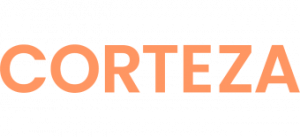One of the core features of Corteza is the powerful open-source Low Code platform. To clarify, this means that it’s a rapid development platform that allows you to create responsive business applications that run in the browser, without having to know how to write code. With the following 4 step plan you can make a fully functional record-based app for your business or organisation:
- Create a namespace
- Add modules
- Set up pages
- Insert charts
1. Create a namespace
In Corteza Low Code applications are called “namespaces”. You can create a new namespace by entering the “Low Code” tab inside Corteza and click on to the “Create namespace” button. If there are many existing namespace, like on the Corteza Community server, you might need to scroll down first. And then, you simply fill in the “name” field and hit “Save and close”.
Before you continue with step two, you need to enter your freshly created namespace.
2. Create the modules
The second step is to create the modules. Corteza Low Code comes with a simple, yet extensive module builder. These modules could be seen as database tables, but in a non-technical way. This means that each module has a set of fields, which represent data you want to store. While most fields are straightforward (string, number,…), there is one special field with an important role: the record field. This record field allows you to link one module to another, creating a relationship between them.
A clear example is one from Corteza CRM, the powerful open-source CRM build with the Corteza Low Code platform. The “Account” and “Contact” modules are related to each other, because an account in the CRM can have multiple contacts. So, the “Contact” module has a Record type field that links to the “Account” module as in the screenshot below. This allows any contact to be related to a account. And if you want that a contact can be related to multiple accounts, simply check the “multiple” checkbox.
3. Set up pages
One you’ve created the modules you need to create the visual layer. These are called “Pages” in Corteza, and there are two types of pages:
- Record pages
A record page shows data related to a single record in a module, which means that every module needs to have one record page. - List pages
These pages act like dashboards or record lists and show up in the automatically generated top menu.
The simple drag-and-drop page editor is the same for both page types. As a result, you select the type of block you want to show (record data, a list, a calendar, a chart,…), configure it and add it to the page. After that, you can drag it to any position and resize it as you please.
For more detailed info, check out the extensive Corteza Low Code tutorial on opensource.com.
4. Insert Charts
Corteza Low Code comes with an advanced open-source chart creation tool. As a result it allows you to create the most used charts in custom business applications, such as line, bar and pie charts. For each chart you define the data source (the module), optional filters, dimensions and metrics, and the chart creation tool manages the rest.
Once you’ve created your charts, you can add them to any page in your own low code business application.
Advanced Low Code features
Corteza Low Code also includes some advanced Low Code features, including access management for different user roles on modules, pages or even single fields, and advanced workflow automation. These two advanced Low Code features will be featured in the coming weeks on this blog.
Try it out yourself!
To summarize, you ony need to follow 4 simple steps to build your own custom business application. In addition, if you want to give it a go, check out the free Corteza Community Server. Log in, open the Low Code app and create your own namespace! Lastly, if you run in to any questions, ping the community for help in the Corteza Community Server messaging tab, or let us know in a comment here.

















Leave a Reply
Want to join the discussion?Feel free to contribute!